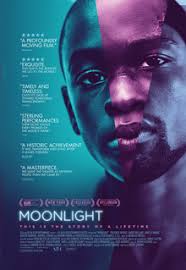Since the establishment of the renowned Best Picture oscar, studios have campaigned for their movie to compete for the award, spending millions per year, even if there hasn’t been an oscar “bump” since 2012.
The change of the oscar “bump”

A depiction of the Oscar medal.
An Oscar “bump” is the winner or nominee of the best picture category gaining more viewership and box office money after the Oscars award show. There hasn’t been more than a 7 million dollar “bump” at the box office since the silent film “The Artist” won in 2012. So why do studious such as Netflix, A24, and Columbia pictures continue to spend 10-20 million dollars a year to campaign their films if the box office success after the oscar bump does not outweigh the costs? Is it because of clout within the industry to gain more rights to critically acclaimed pictures? Or is it because the economy and social structure has changed to where less people go to the theatre and more people view movies on their laptop on streaming services? How about both? Viewership matters most to studios so it does not matter if the film is being viewed on streaming services or the theatre? Or does it? Obviously, studios like Sony and Columbia pictures would love everyone to get off streaming services and go to the theatre if they do not have a partnership with the given streaming service. But Netflix, that is buying enormous amounts of oscar-nominated content, would love the bulk of their viewership to come from their streaming service. The economic incentive to promote these movies for studios is to gain even more rights to other critically acclaimed movies. There is a cutthroat competition that is ensuing between theatre-driven companies such as A24, Columbia, and Sony, and streaming service giants such as Netflix and Amazon Prime(which both spend and promote tons of movie content to get people to watch). Furthermore, the “Oscar bump” is and isn’t what it used to be. It has always been to gain viewership of the movie they promoted but it’s not completely in the theatres anymore. The bump is happening much more on streaming services and to realistically gather the revenue/profits made off of the promotion, streaming service viewership data would have to be included with box office money to get an accurate description of if promoting the picture is worth it. I can tell you this though, if it wasn’t making them money, they would not continue to spend millions to promote it!
Further information on the economic incentive.

The A24 studious logo that has become popular in critically acclaimed films.
It is just as important for an independent company to invest in critically acclaimed pictures to enter the cutthroat competition. A few years ago, A24 was just a small independent studio trying to enter the competition. Since 2016, we have seen an independent film company such as A24 rise to prominence after “Moonlight” won the studio its first best picture award in 2016. Since 2016, not only has A24 received the rights to huge box office successes such as “Hereditary” and “The Lighthouse”, but also critically acclaimed films that are supposed to be up for multiple Oscar nominations such as the upcoming releases of “Waves” and “Uncut Gems”, and the already released “The Farewell” and “The Last Black Man in San Francisco”. Its 2016 best picture winner, Moonlight, did not have a huge “Oscar Bump” with box office success or streaming services until late 2018 when it appeared on the Netflix streaming service. Although Moonlight did not garner an extreme amount of box office success or streaming service recognition after its best picture win, it catapulted the smaller/independent studio in A24 to a household name that will continue to have rights to critically acclaimed films for years to come.
Conclusion!

The poster for 2016 Best Picture winner, Moonlight.
In conclusion, the economic incentive for studios to promote critically acclaimed films relies on how much they make off both streaming services and box office money, and the prestige the award gives the studio to gain rights to more critically acclaimed movies. Promoting the film then proves to be an investment for the studio. Yes, sometimes the studio will lose money if their picture did not get nominated or win when they spent 10 million dollars promoting it. But, a lot of the time it will make the studios’ money in the long run as the investment will pay off. This gives more of an incentive for independent studios to look at A24 as an example to promote and gain rights to a critically acclaimed picture that will lose them money in the short run, but in the long run, it will catapult them into a competition to gain rights to more and more critically acclaimed films.